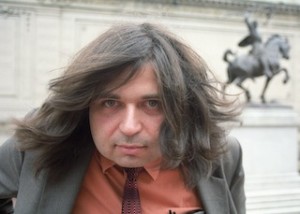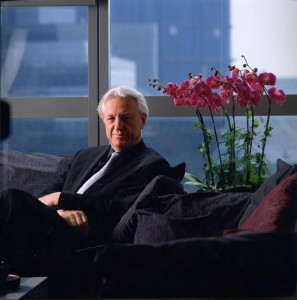This Thursday evening, the Locrian Chamber Players are presenting a concert at Riverside Church in New York City. The program features music by Harrison Birtwistle, Judith Shatin, John Luther Adams, and Frank J. Oteri. Frank is a fixture on the NY scene. He’s the composer advocate for the American Music Center and is Founding Editor of their web magazine New Music Box. Frank is indeed a persuasive advocate on behalf of other composers, but he’s not asked about his own music nearly often enough. In the interview that follows, we focus primarily on Brinson’s Race, the piece that appears on Thursday’s concert. But along the way, we are given a window into Oteri’s approach to composition and his harnessing of a veritable smorgasbord of musical interests and influences.

CC: First, let’s talk about the dedicatee. Who’s Robert Overstreet? How did you meet him?
FJO: Robert Overstreet was a fascinating man who collected art and taught for many years at Auburn University in Alabama where he was Professor Emeritus of Communication and founded The Reader’s Theatre. All his students called him “Doc.” After he retired, he moved to back to where he grew up, in rural Georgia where he maintained a small farm. We first met in 1996 and since then had had countless conversations about art, literature, music, travel, and martinis–he had at least one every day. He wrote tremendous letters (all handwritten). He was one of the last people with whom I maintained a mail correspondence; although I regret that I was far less prompt in answering his letters than he was in answering mine. He died in December 2005.
Could you tell us a bit about Brinson’s Race – the place? How did you come to decide to write a work about this location?
Over the years I had the pleasure of making several visits to his country home, an estate called Brinson’s Race, in Emanuel County, one of only two counties in Georgia to vote against secession prior to the American Civil War. Overstreet’s family lived on this land since that time and the land even includes a family cemetery. Since Robert Overstreet’s death, his daughter Laura Overstreet Biering has maintained Brinson’s Race as a family farm as well as a retreat. She set up a nice website for it that gives some more detailed history of the place and even talks about my piece of music (http://www.brinsonsrace.com/).
Trumpet plus string quartet is an interesting combination – one that you don’t see on concerts too terribly often. How did you decide on the instrumentation?
Every year Robert Overstreet used to present a chamber music concert in nearby Twin City which consisted of works from the standard repertoire. After hearing a recording of my 1985 song cycle Two Transfers for tenor and string quartet, he asked me to write a piece especially for one of his concerts scored for trumpet and string quartet. As far as anyone knows it was the first world premiere in Twin City. While the trumpet and string quartet idea was completely his, I think clash between a solo brass instrument and a closely-related group of strings is an interesting sonic metaphor for the clash of me, the ultimate city dweller, discovering a place that is so deeply rural.
The way you use it reminds me in certain places of Ives’ Unanswered Question. Not necessarily linguistically, but in terms of having the trumpet ‘work against’ or run ahead of the strings in certain places. Was Ives a touchstone for the piece? Were there others you’d like to mention?
Ives has always been one of my personal heroes. There are many other role models for this piece, among them, believe it or not: Arnold Schoenberg, Milton Babbitt (the first movement actually incorporates a serial approach to duration, albeit one that does not sound as you might expect it to), Philip Glass (the early strict additive process pieces), John Cage, Pauline Oliveros, Henry Cowell, Conlon Nancarrow, Elliott Carter and Johannes Brahms, to some extent though admittedly it might be hard to hear their influence in here, and even Ornette Coleman and J.S. Bach.
But perhaps the biggest touchstone for me about this piece is that it was the first new piece I started and completed in the 21st century and, in retrospect, it marked a new phase in my composition. It was the first piece I composed after my performance oratorio MACHUNAS and the first lengthy piece of instrumental chamber music I had composed in a very long time.
Also, Brinson’s Race was the first substantial new piece of music I conceived of after starting to work at the American Music Center. In my first year at AMC, I had a lot less time to compose and I was still trying to complete the vocal score for MACHUNAS. Then I had a very heavy case of writer’s block for musical composition. The amount of music I was being exposed to was daunting and rather intimidating. The polystylism of Brinson’s Race I think is a direct result of being exposed to such a variety of music. In addition, it began a new interest in very formal design that has remained a hallmark of almost all the music I have composed since then.



